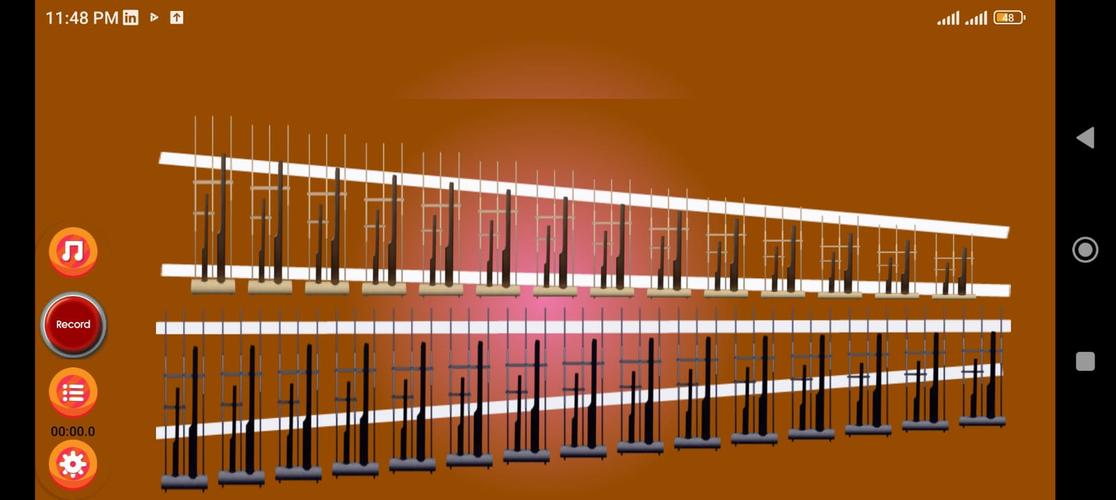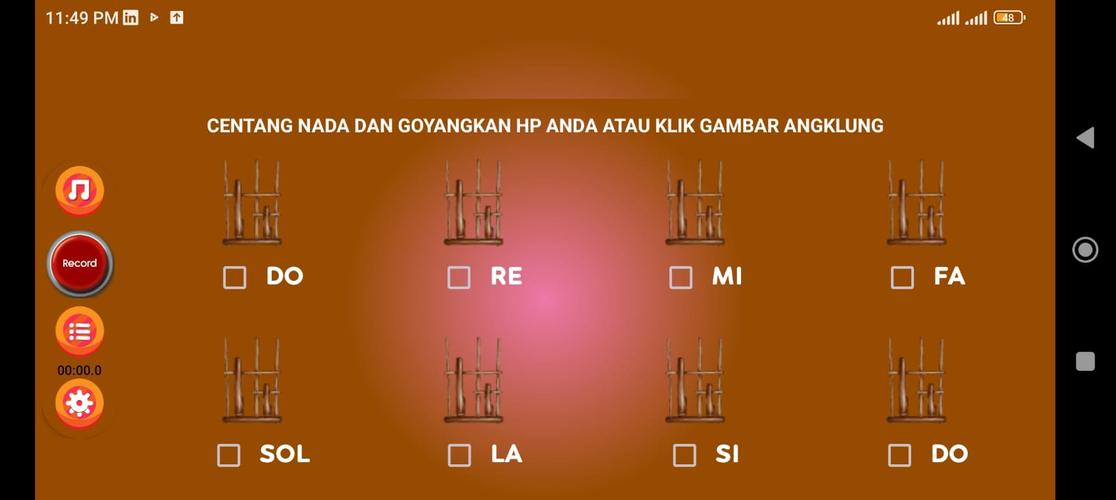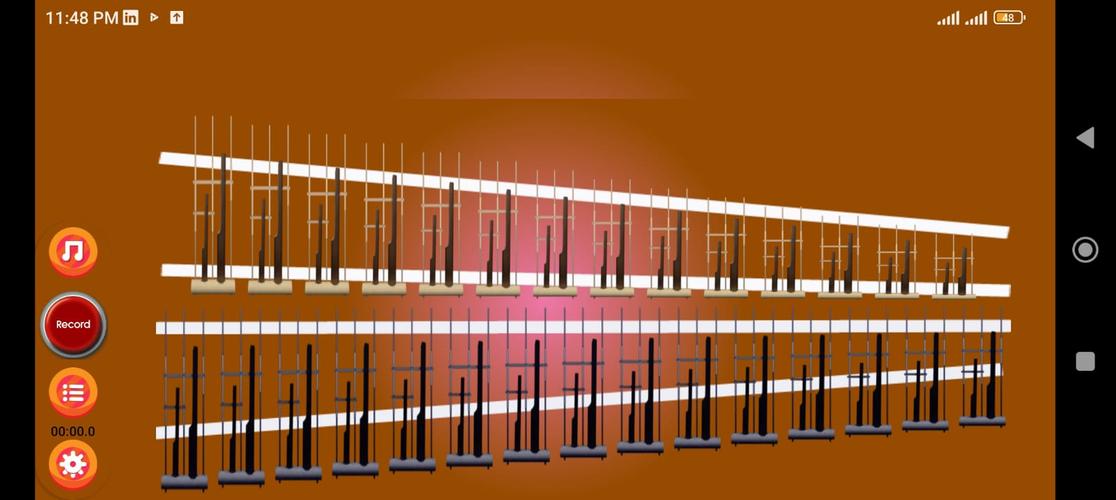Angklung Instrument
Angklung: A Traditional Indonesian Musical Instrument
The term "angklung" originates from the Sundanese language, where "angkleung-angkleung" refers to the rhythmic movements of the players, while "klung" represents the tonal sounds produced by the instrument. Each note is generated by bamboo tubes of varying sizes, creating a harmonious melody when shaken. As such, angklung is typically played collectively to produce a complete tune.
Construction of Angklung
Angklung is traditionally crafted using black bamboo (Awi wulung) or ater bamboo (Awi temen), which turns a distinctive yellowish-white color upon drying. The instrument is assembled by binding two to four bamboo tubes of different sizes together with rattan.
Playing Techniques
Playing the angklung is relatively straightforward. Players hold the upper frame of the instrument and shake the lower portion to produce sound. There are three basic techniques:
- Kerulung (Vibration): The most common technique, where both hands grip the base of the bamboo tubes and shake them side-to-side repeatedly to sustain a note.
- Centok (Flick): The tube is quickly pulled back by the fingers towards the palm, causing the angklung to produce a single percussive sound.
- Tengkep: The player vibrates one tube while holding the others still, resulting in a single sustained note.
Types of Angklung
Over time, various regions in Indonesia have developed their own unique types of angklung:
- Angklung Kanekes: Originating from the Baduy people, this angklung is played exclusively during rice planting ceremonies and is crafted only by members of the Baduy Dalam tribe.
- Angklung Reog: Used to accompany the Reog Ponorogo dance in East Java, this angklung has a distinct shape and sound. It produces only two notes and is often used as a decorative piece.
- Angklung Dogdog Lojor: Associated with the Dogdog Lojor tradition, a ritual honoring rice crops. This angklung is played during ceremonial processions and is limited to six players.
- Angklung Badeng: Originating from Garut, the Angklung Badeng was initially used to accompany rice planting rituals. Following the spread of Islam, it became an instrument for religious propagation.
- Angklung Padaeng: Introduced by Daeng Soetigna in 1938, this angklung features modified bamboo tubes that produce diatonic notes. This allows it to be played alongside modern and popular musical instruments.
Daeng Soetigna's vision was furthered by Handiman Diratmasasmita, who sought to elevate the angklung's status to that of international musical instruments. He continued to develop diatonic angklung with improved designs. Udjo Ngalegena also played a significant role in promoting the angklung to the wider public.
Angklung Instrument
Angklung: A Traditional Indonesian Musical Instrument
The term "angklung" originates from the Sundanese language, where "angkleung-angkleung" refers to the rhythmic movements of the players, while "klung" represents the tonal sounds produced by the instrument. Each note is generated by bamboo tubes of varying sizes, creating a harmonious melody when shaken. As such, angklung is typically played collectively to produce a complete tune.
Construction of Angklung
Angklung is traditionally crafted using black bamboo (Awi wulung) or ater bamboo (Awi temen), which turns a distinctive yellowish-white color upon drying. The instrument is assembled by binding two to four bamboo tubes of different sizes together with rattan.
Playing Techniques
Playing the angklung is relatively straightforward. Players hold the upper frame of the instrument and shake the lower portion to produce sound. There are three basic techniques:
- Kerulung (Vibration): The most common technique, where both hands grip the base of the bamboo tubes and shake them side-to-side repeatedly to sustain a note.
- Centok (Flick): The tube is quickly pulled back by the fingers towards the palm, causing the angklung to produce a single percussive sound.
- Tengkep: The player vibrates one tube while holding the others still, resulting in a single sustained note.
Types of Angklung
Over time, various regions in Indonesia have developed their own unique types of angklung:
- Angklung Kanekes: Originating from the Baduy people, this angklung is played exclusively during rice planting ceremonies and is crafted only by members of the Baduy Dalam tribe.
- Angklung Reog: Used to accompany the Reog Ponorogo dance in East Java, this angklung has a distinct shape and sound. It produces only two notes and is often used as a decorative piece.
- Angklung Dogdog Lojor: Associated with the Dogdog Lojor tradition, a ritual honoring rice crops. This angklung is played during ceremonial processions and is limited to six players.
- Angklung Badeng: Originating from Garut, the Angklung Badeng was initially used to accompany rice planting rituals. Following the spread of Islam, it became an instrument for religious propagation.
- Angklung Padaeng: Introduced by Daeng Soetigna in 1938, this angklung features modified bamboo tubes that produce diatonic notes. This allows it to be played alongside modern and popular musical instruments.
Daeng Soetigna's vision was furthered by Handiman Diratmasasmita, who sought to elevate the angklung's status to that of international musical instruments. He continued to develop diatonic angklung with improved designs. Udjo Ngalegena also played a significant role in promoting the angklung to the wider public.





